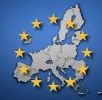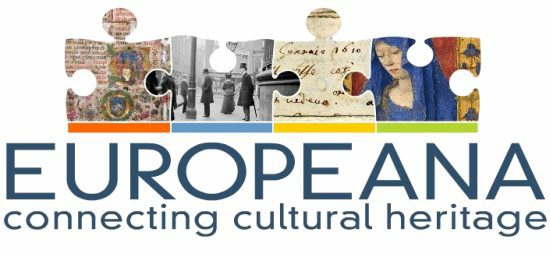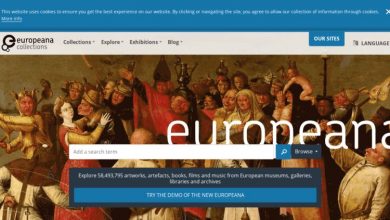Europeana
The European Digital Library “Europeana” offers readers over 4 million publications. But the lack of pan-European copyright agreements on the Internet hinders the development of the project. What can the EU do?
“Can we create something better and more beautiful than the Alexandria Library, where, according to legend, 30 to 70 percent of the world’s knowledge was stored?” – this question completes one of the documents of the European Commission, which describes the project for creating a European digital library. The EDL will unite in a single network the digitized funds of libraries, archives, museums of the EU member states. A multilingual web portal will facilitate access to books, maps, archival records, photographs and audiovisual materials from various cultural institutions in many European countries. Its creation is a long-term project. But the prototype starts in November 2008 and will provide open access to at least two million digitized objects. Until 2010, according to forecasts of the European Commission, the library will already have six million objects.
Electronic (digital) library – a collection in which all materials are stored in digital format and are accessible for work from a computer. It contains not only text materials, but also translated into electronic form using imitation and 3D modeling of images of sculptures, paintings, models and any other exhibits previously exhibited only in museums.
One of the first digital libraries was founded by the British Library – in 1993 not only a complete catalog of its repository was created here, but also 80 percent of full-text publications were digitized. Even earlier, in 1989, the Japan National Digital Library was established, with a total value of $ 500 million.
In one of the largest libraries in the world – the Library of Congress – over the past 12 years, ten percent of the funds have been digitized, that is, 11 million materials (the cost of the work is $ 198 million). Every day from 75 to 200 documents are scanned in the library. According to experts, the digitization of its entire fund (134 million objects) will require more than one decade.
In 2006, the National Library of France translated into digital format and posted 80 thousand text works on the website. The cost of their digitization is estimated at 80 thousand euros. The funds of the French National Library plan to digitize 150 thousand works annually.
The digitization of library collections, begun in 1995, is rapidly being carried out in Germany. Since 2008, the German Research Society plans to provide from 10 to 20 million euros annually for digital processing of funds of scientific libraries.
Along with national and continental electronic library projects, in 2005, the United Nations established the global international project “World Digital Library” (World Digital Library).
Electronic libraries are needed not only for the preservation of information, but also to facilitate the educational process, access to information. The governments of most European countries, the USA and Canada define the formation and filling of digital libraries as a strategically important task to improve the quality and accessibility of education. Among the largest university projects for the creation of electronic libraries are the University of California at Berkeley, Cornell, Harvard, Stanford, Oxford universities, the Sorbonne.
Coordination of the activities of the EU member states in digitizing the cultural and scientific heritage and distribution of European digital content on the Internet began in 2000 after the adoption of the Lisbon Strategy. Within it, in 2001, a Group of National Representatives was created and approved the Lund Principles and the Lund Action Plan until 2005 on digitizing the cultural and scientific heritage and providing access to it.
The strategy for the development of the information society in Europe, called “i2010 – European Information Society for Growth and Employment,” was also approved. One of the goals of the strategy is to build a single European information space, the EDL will become the dominant component of which.
In May 2005, German Chancellor G. Schroeder, Italian Prime Minister S. Berlusconi, Polish President A. Kwasniewski and Spanish Prime Minister Jose Luis Rodriguez Zapatero discussed the prospect of creating a single resource that could unite European libraries. The idea was supported by the European Commission, the European Parliament and the governments of European countries.
According to some researchers, the decision to implement the ECB creation project by European governments was made in response to the GooglePrint and Google CookSearch projects related to digitizing book collections and providing access to them. Initially, this project was focused only on English-language books published in the United States. Then it was announced that applications for scanning books in English were announced in 14 countries, including the UK, Australia, Canada, Ireland, New Zealand, India, Pakistan, South Africa, Kenya, Jamaica, etc. Later it became known about the digitization of German publishers, France, Spain and the Netherlands subject to intellectual property rights. Books will be scanned and indexed completely, but users will only be able to view about a fifth of all pages. There are also other forms of representing the country in the global information space. For example, the Bavarian State Library plans to make it available to Google to digitize over a million books from its collections, provided that copies of the products are received. Similar agreements are concluded between Google and libraries of the USA and Great Britain. In total, Google should crawl 15 million books and provide them to Internet users for free.
The idea of creating the ECB has a serious technological justification. Within the framework of the fifth, sixth and seventh EU framework programs (FP7), many programs and a number of research and technological projects related to digitization have already been implemented and are being implemented. The implementation of the eEurope2002, eEurope2005, e-Content and e-Contentplus programs was of significant importance in this area. The budget of only one eContentplus program (2005-2008), aimed at the production of European digital content, is 149 million euros.
The European Digital Library will rely on the TEL infrastructure (The European Library – theeuropeanlibrary.org) created by nine European national libraries that are members of the Conference of European National Libraries (CENL). TEL currently provides web access to the catalogs of 45 national participating libraries.
To formalize cooperation between libraries, archives, museums of the EU countries, the European Digital Library Foundation has been created, which will solve organizational issues. Analyzes the digitization work of the High Level Expert Groop on Digital Libraries. It includes experts from various cultural institutions, publishers and other legal owners, representatives of the ICT industry, scientific societies.
In its last report, “On the initiative 2010: Towards a European Digital Library” in July 2007, the European Parliament emphasized the critical importance of this project for the future of Europe and called on EU member states to coordinate and develop plans for digitizing cultural content at the national and regional levels.
This post is also available in:
 English
English  Русский (Russian)
Русский (Russian)






